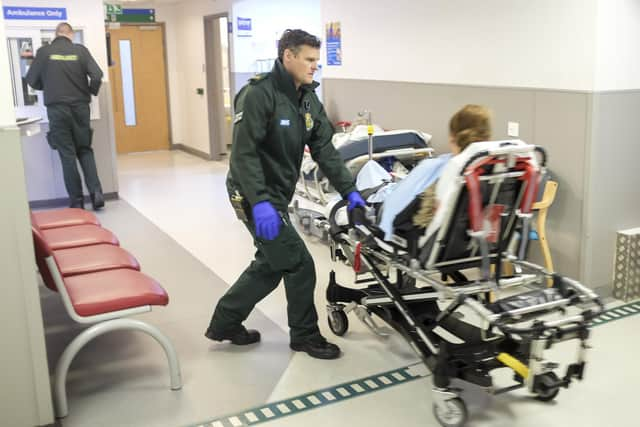Prioritisation may be the only way the NHS will survive the winter
Winter is finally here, bringing with it cold weather, infectious diseases and a huge surge in trips and falls. That could spell disaster for NHS Scotland.
During last winter’s NHS crisis, the Royal College of Emergency Medicine (RCEM) in Scotland warned there was an excess mortality of 50 deaths in Scotland every week, due to the pressure on emergency departments.
Advertisement
Hide AdAdvertisement
Hide AdAccording to statistics published by National Records of Scotland (NRS) 24,427 deaths were registered in Scotland between December 2022 and March 2023 - 11 per cent higher than the previous winter - and the highest number of deaths since the winter of 1989/90.


Increasingly long waiting times lead to poorer outcomes for patients, causing needless deaths which would otherwise have been prevented.
Last winter - “the worst winter ever”, according to Nicola Sturgeon - Scotland’s hospitals reached 95 per cent capacity, waiting times for A&E soared and ambulances queued up outside. The severity of the situation led the then-First Minister to host weekly, televised press conferences.
Already, pressure is building in Scotland’s A&E departments, with medical unions warning Scotland is in a worse place now than it was during last year’s pre-winter period, signalling a deeper winter crisis is set to come.
Patients are already being left waiting outside in ambulances - which doesn’t count towards Scottish Government A&E waiting times figures - and sick people dumped in corridors “with no real nursing or medical care” while they wait to be seen.
Two of Scotland’s worst performing A&E health boards say they are continuing to experience “extreme pressures” across “the whole health and social care system” - even before the winter period begins.
NHS Forth Valley is managing to see just 45 per cent of patients within four hours, while NHS Borders is seeing just 62 per cent.
While an ageing population, a backlog of treatment caused by the coronavirus pandemic, and a recruitment and retention crisis are the main causes of pressure in Scotland’s hospitals, a lot can be alleviated by personal decisions made by patients.
Advertisement
Hide AdAdvertisement
Hide AdNHS Tayside - Scotland’s best performing mainland health board when it comes to A&E figures - has spent two decades signposting patients to alternative services, rather than turning up at A&E with minor injuries.
Gone are the days of turning up at A&E with a broken bone, or an illness - A&E is now increasingly reserved for people who need resuscitated. The rest are filtered to NHS111, a minor injuries and fracture clinic, straight to an Acute Medical Ward (if they are desperately ill but don’t need resuscitation), a surgical ward for intervention, to an out-of-hours GP or their local GP.
A&E is no longer a one-stop shop for all ailments, it needs to be prioritised for life-threatening situations only. That will require a cultural sea change and a lot of learning, particularly for Scotland’s older generations that have used A&E for broken bones, illnesses or just to be ‘checked out’.
Prioritisation and filtering is the only way the NHS will survive the winter.
Comments
Want to join the conversation? Please or to comment on this article.